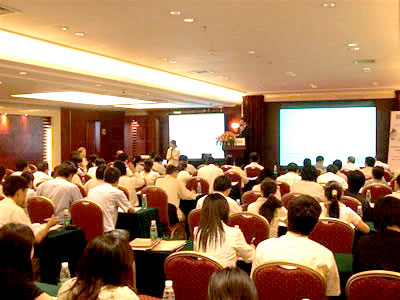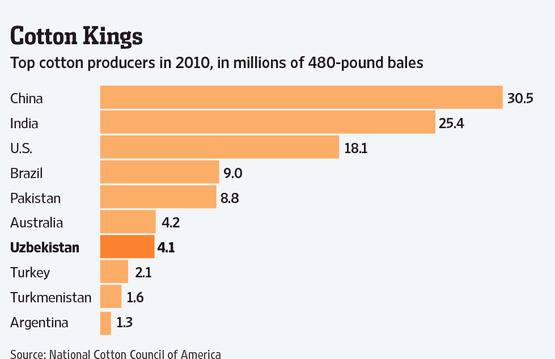|
For years, the Indian textile industry has earned its bread and butter through exports to the US and Europe. Now, especially after the 2008 recession and the prevailing economic gloom in the EU markets, the industry is wary of betting high on western markets. As a result, a slew of newer markets are being explored, with increasing success. Consider the following. In 2008-09, more than 60% of cotton textile exports (yarn, fabrics and made-ups) has been to the Europe and US. In two years, this has come down below 45%, according to data from Global Trade Information Services, Geneva. The rest of the world -- as the non-US, European markets are termed -- is made up of a slew of emerging markets such as Bangladesh, China, Sri Lanka and South Korea, among others. Exports to the newer markets have consistently risen through these years. In 2010-11, Europe and US accounted for about $3,000 million of India's textile exports, exactly the same as in 2008-09. The rest of the world clocked $3,782 million, a jump from $2,026 million two years ago. "Intra-Asian trade is set to rise, with consumption growing at faster rates in these countries. India's consumption is growing at 7%," said Siddharth Rajagopal, ED, Texprocil, an export promotion body. Numbers for another category of exports - knitted apparel and clothing accessories - tell a similar tale. In this segment, exports to the Europe markets have fallen to about $2,153 million in two years, out of India's total exports of $4,775 million in this category. The US market has managed to hold on to its numbers. But, it's again a number of smaller markets such as UAE (from $368 million to $511 million in two years), Australia ($15 million to $32 million) and even Djibouti (from zero to $13 million) that have fuelled Indian apparel exports during the recession years. economictimes
|
|
UKs specialist fabric manufacturer renamed WSP Textiles
Updated: 2011-11-10 Source: economictimes

Recommended News
Photo Gallery
Most Popular



